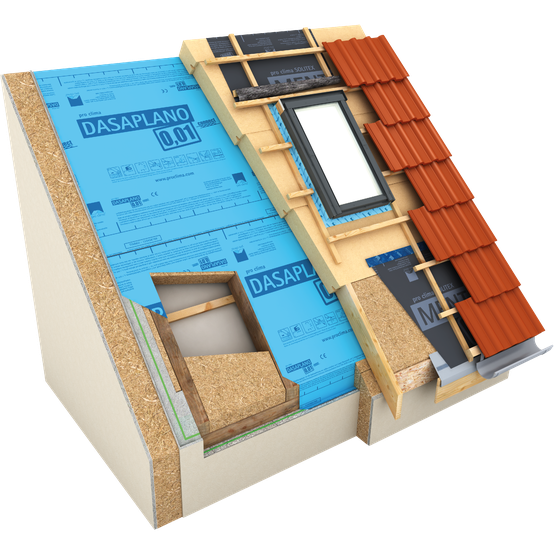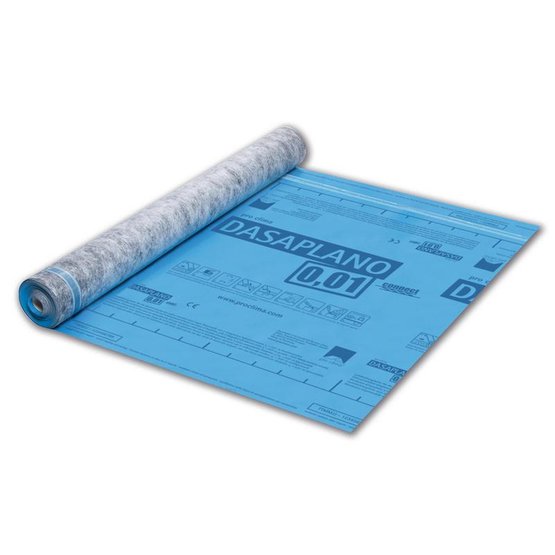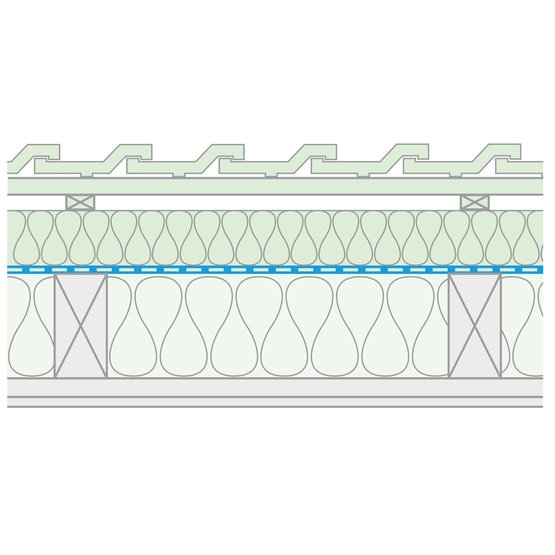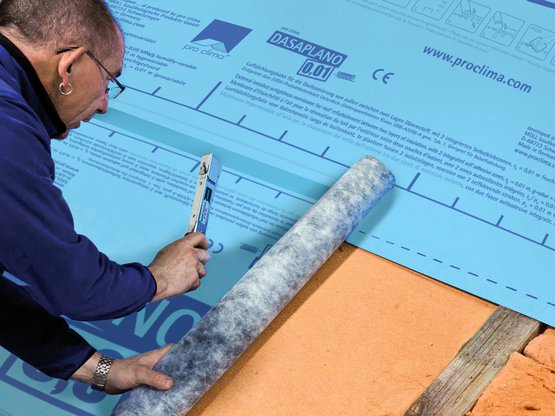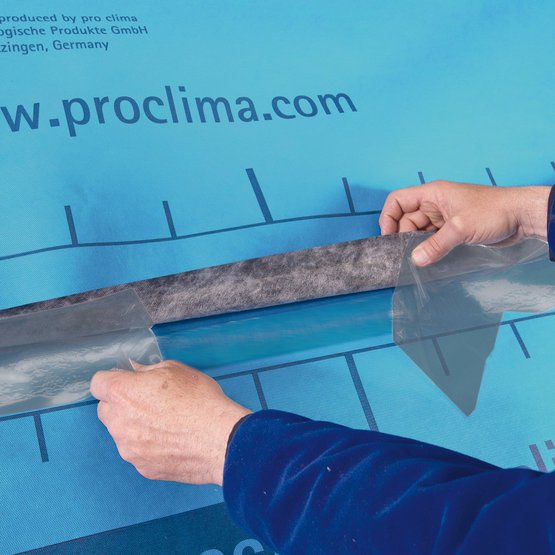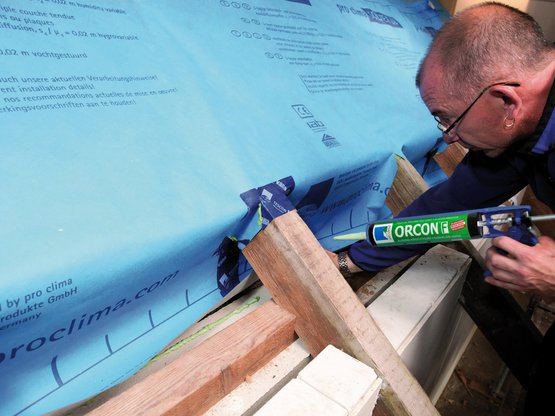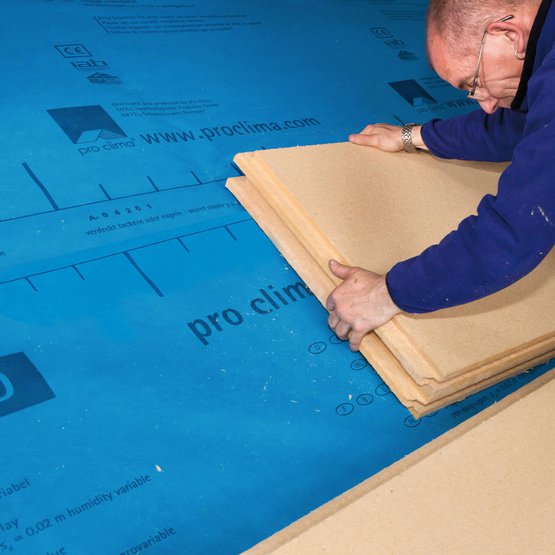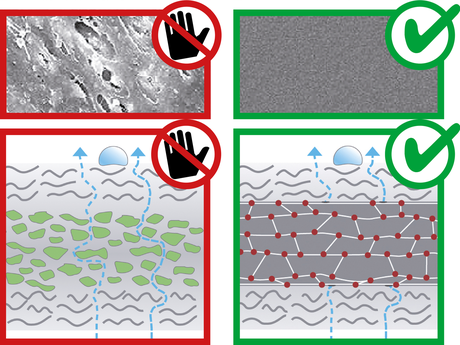Airtightness membrane for roof refurbishment from the outside, with self-adhesive strips
Advantages
- Simple implementation of the airtightness layer: installation across rafters and insulation
- Dry and well-protected building structures thanks to active moisture transport
- Protection during the construction phase: suitable as a temporary covering
- Quick and reliable adhesion thanks to the integrated ‘connect’ self-adhesive strips along the membrane strips
- Excellent values in hazardous substance testing, has been tested according to the ISO 16000 evaluation scheme
Areas of application
For use as an airtightness membrane that can be subjected to outdoor exposure for roof refurbishment from the outside in the case of full packing of the existing spaces between the rafters with insulation. Installation across the rafters, underneath an additional layer of over-rafter insulation consisting of wood-fibre underlay panels. Please contact Technical Support at pro clima in Germany for assistance with calculating the thickness of the external wood-fibre insulation that is required from a building physics viewpoint.
Roof refurbishment made simple and efficient
TEEE technology ensures reliable protection
The airtightness layer should ideally be installed on the inside of the thermal insulation. In certain circumstances, an airtight membrane with special characteristics can also be positioned in the middle of the thermal insulation – in this case, the thicknesses of the insulation layers need to be calculated on a project-specific basis; please contact Technical Support at pro clima in Germany for assistance. Selecting a suitable membrane is of critical importance for this particular application. To meet the challenges of this demanding construction physics situation, membranes with a monolithic functional film with active moisture transport, such as that contained in DASAPLANO 0,01 connect, should be used.
DASAPLANO 0,01 connect is airtight and highly diffusion-open, and reliably facilitates active moisture transport with very low diffusion resistances thanks to its pore-free functional film, even if condensation forms on the membrane. In contrast, conventional microporous membranes may react to condensation formation on the membrane with increasing sd values and g values (and decreasing perm values). The consequence is further condensation formation – mould and moisture damage to structures can result.
Pore-free membrane – active moisture transport
Pore-free membranes actively transport moisture to the outside – the more moisture is present, the faster it is removed. Their diffusion resistance drops in this case. Only a minimal partial pressure gradient for water vapour is required for moisture transport.
Ideal in the case of refurbishment from the outside: this membrane is extremely resistant to driving rain thanks to its pore-free functional film. High impact speeds or water drops with reduced surface tension are not a problem for DASAPLANO 0,01 connect.


